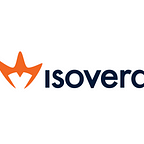Does Your Webpage Engage or Enrage?
According to a Microsoft Corporation study, a human has an average attention span of eight seconds, and a goldfish has an attention span of nine seconds.
Juxtaposed (as you can probably imagine) when these stats came out way back in 2013, headlines all over read:
- “You Now Have a Shorter Attention Span Than a Goldfish” (Time)
- “Is Your Attention Span Shorter Than a Goldfish’s?” (WSJ)
- “Humans have shorter attention span than goldfish […]“ (IFLScience!)
Later, it was found that the data in the study may not have been substantiated, and critical responses arose about attention being very task-dependant. Nevertheless, the stat gained popularity, especially within the marketing community, as user attention span affects user engagement, which is key to conversions.
But how can we keep user attention and translate it into user engagement? How can we leverage our websites to gain engagement and conversions? This piece will walk you through three quick wins that can be used to increase website user engagement and provide better website interactions.
Site Performance
A performant website is part of user website engagement.
Website performance is the how quickly your website renders, loads, and shows content to your audience.
Performance in itself may not engage users, but it does stop them from leaving due to slow load time and rendering. This is important because if a website performs poorly, it is unable to keep users from leaving, leading to low engagement.
Address performance optimization through:
- Build — Is your site built to perform? Does it implement best practices and solid design? Good code and strategic building is imperative to optimizing a website’s performance.
- Budget — Not sure where your site’s performance is dragging? Look into a performance budget to analyze site elements to see which aspects are holding back performance.
- Weight — Do fonts and images take forever to load? What’s their page weight? Part of site optimization has to do with how much “stuff” is on a webpage. Minimize load time through elements such as image compression, or responsive fonts.
User needs and desires
Websites should address implicit and explicit user goals.
User needs and desires are the underlying causes of why users visit sites.
Websites should be user centric so visitors can easily navigate and find what they came to a site for. This is important because if you don’t address users’ wants and needs, they won’t stick around for long.
Address user needs and desires by being:
- Direct — Can users accomplish their end goal without getting lost? If no, consider analyzing their user journey, and determining how to make it easier to travel
- Organized — If users want to read case studies on apples, would they look under “apples” or “case study”? Organize your site according to how users look for things
- User-Oriented — Is your site made with the end users in mind? Do you have elements like single sign-on, two-factor authentication, or responsive design? To be user-oriented, think of ways you can make the end user’s journey easier, or improved.
Call To Actions (CTAs)
CTAs help users interact with a website and prime them for actions.
Call to Actions are elements on your webpage that call on your user to carry out an action.
CTAs are often accompanied by contextual help and are important because they guide users to make specific decisions, carry out their goals, and be led down specific user journeys.
Address the need for strong CTAs with:
- Clear Commands — Commands like “Subscribe here!” and “Sign-up for our emails!” tell users what to do, and guide their actions. Commands allow you to collect contact information and set you up for future engagement down the line.
- Directions — How do site users interact with a site if they don’t know where to begin? Add CTAs to direct users where to go. For instance, a charity might have a “donate today” button; an eCommerce site might show a “check out our new arrivals” button.
- Industry Standards — Where is a web site's shopping cart? The search bar? Across many sites, the answers is “upper right corner” and “at the top”. Follow industry standards like these to help site users know where things are, and how to carry out actions.
We hope this article gave you insights and ideas on how you can increase your website engagement! Questions? Comments? Suggestions? Thoughts on other goldfish memory studies? We’d love to hear what you have to say below!
This article was originally published by Maggie Newberg on our Isovera blog.
